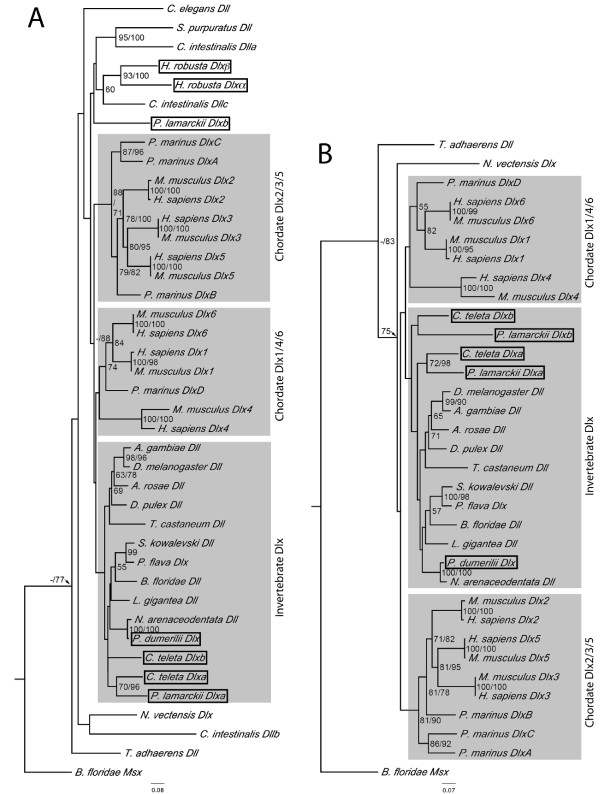Figure 2.
Neighbour-joining analysis of the phylogenetic relationships of annelid Dlx genes. JTT method of substitution with 1000 bootstrap replicates. Percentage of bootstrap support is shown when over 50%, followed by Bayesian posterior probability values where these are over 70%. The trees are rooted with BfMsx, branch lengths are to scale (scale = substitutions/site). Sequences from representative species include Anopheles gambiae (arthropod), Athalia rosae (arthropod), Branchiostoma floridae (cephalochordate), Caenorhabditis elegans (nematode), Ciona intestinalis (ascidian), Drosophila melanogaster (arthropod), Daphnia pulex (crustacean), Homo sapiens (vertebrate), Lottia gigantea (mollusc), Mus musculus (vertebrate), Neanthes arenaceodentata (annelid), Nematostella vectensis (cnidarian), Ptychodera flava (hemichordate), Petromyzon marinus (chordate), Saccoglossus kowalevski (hemichordate), Strongylocentrotus purpuratus (echinoderm), Trichoplax adhaerens (placozoan), Tribolium castaneum (arthropod). Sequences that are the subject of this study are boxed. A. Analysis including highly divergent sequences. There is some support for the homology of C. teleta and P. lamarckii Dlxa sequences but the relationships of the other annelid Dlx sequences are unknown. H. robusta Dlxα and Dlβ group together with other sequences with longer branch lengths, possibly as a result of long branch attraction. B. Analysis excluding highly divergent sequences. As well as the grouping of C. teleta and P. lamarckii Dlxa genes, the Dlxb genes of these two species now also show an affinity, but without strong support values.

